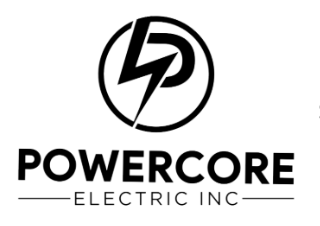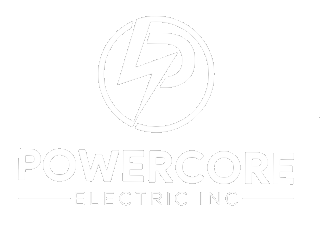Introduction
Navigating the process of transferring a solar lease can feel overwhelming, especially for homeowners who want to ensure a seamless transition for both themselves and the new occupants. With the increasing popularity of solar energy, understanding the ins and outs of lease transfers is essential.
From reviewing lease agreements to coordinating with new homeowners, each step plays a crucial role in maintaining the benefits of solar energy. This guide breaks down the key steps and considerations, empowering homeowners to tackle the lease transfer process confidently while addressing common challenges along the way.
Whether selling a home or simply looking to transfer a lease, being well-informed can make all the difference in ensuring everyone involved can enjoy the advantages of solar power.
Step-by-Step Process for Transferring Your SunPower Lease
Transferring your SunPower agreement can seem daunting, but with a few straightforward steps, you can make the process as smooth as possible:
- Review Your Rental Agreement: Begin by taking a close look at your existing rental agreement. Pay special attention to sections that outline the process of moving, potential fees, and any specific requirements for transferring your agreement. Keep in mind that the typical system size referenced is about 4 kW STC, which may affect your considerations during the transfer.
- Contact SunPower Customer Service: Give SunPower’s customer service team a call or send them an email to inform them of your intention to move your lease. They’re there to help and will provide you with detailed instructions and any necessary paperwork, including , to get started.
- Gather Required Documentation: Ensure you have all the necessary documents prepared for the procedure. This could include proof of homeownership, your identification, and any specific forms that SunPower may require.
- Submit the Request for Movement: Fill out the request form as directed by SunPower. Double-check that all the information is accurate to prevent any delays in the process.
- Coordinate with the New Homeowner: If you’re selling your home, it’s essential to coordinate with the new homeowner. Make sure they agree to take over the agreement, as they’ll need to provide their information and approval during the transition process. Remember, when purchasing a home with an existing energy agreement, the buyer must take over the contract and payments for the sunpower lease transfer during the duration of the agreement, and the energy provider will perform a credit check.
- Follow Up: After you’ve submitted your request, don’t hesitate to follow up with SunPower to confirm that your request is being processed. Keeping a record of your communications can be helpful for future reference.
- Complete the Transfer: After SunPower approves the transfer, ensure the new resident obtains all the essential details about the rental agreement and the energy system. This should encompass upkeep advice and how to contact customer support for any inquiries they may have in the future.
By adhering to these guidelines, you can guarantee a seamless transition for your renewable energy agreement, including the sunpower lease transfer, allowing both you and the new resident to benefit from clean energy. Additionally, consider that even if you’re not selling your home, purchasing the energy system could be an option worth exploring.
Understanding the Impact of SunPower’s Business Changes on Lease Transfers
Navigating the evolving environment of solar contracts, especially with SunPower withdrawing from new arrangements, can pose distinct challenges for property owners. Here are some essential points to guide you through this transition:
- Limited Support for New Leases: With SunPower discontinuing support for new leases, current leaseholders may face difficulties when transferring agreements, especially if the new homeowners are unfamiliar with the terms.
- Potential for Increased Fees: The pause in new rental assistance might introduce additional fees or conditions during the transition process. It’s advisable to clarify these potential issues with SunPower upfront to avoid unexpected surprises.
- Impact on Home Sales: If you’re thinking about selling your home, be aware that potential buyers may hesitate to take over a solar agreement. Being informed about the SunPower lease transfer process and recent changes at SunPower can help you proactively address any buyer concerns.
- Seek Alternatives: If you encounter obstacles while initiating , don’t hesitate to explore options like buying out the contract or switching to a different financing model. Consulting with SunPower representatives can provide personalized guidance tailored to your situation. Additionally, consider looking into programs highlighted in articles like “How Homeowners Can Benefit from Government Solar Panels Program” for potential financial support.
Additionally, take note that homeowners installing a panel system can recover 30% of the installation cost thanks to the Inflation Reduction Act, which could significantly influence your investment decisions. However, the present uncertainty surrounding existing renewable energy contracts and service reliability due to industry layoffs adds complexity to the situation. As one industry expert mentioned, “At this time, there is no guarantee that the Company will be able to do so or that all employees would be retained,” indicating potential service challenges.
By comprehending these changes and consulting insights from related articles, such as ‘Top Panel Cleaning Services and What They Provide,’ you’ll be better prepared for the agreement process and can make informed choices about your energy investments. Remember that programs like Solar Insure’s SolarDetect can help maintain your warranty coverage, providing peace of mind even amid industry changes. Stay proactive, and you’ll confidently navigate this evolving landscape!
Preparing Your Home for the Lease Transfer
Getting your home ready for a sunpower lease transfer involves a few thoughtful steps that can make a significant difference for the new homeowner. Here’s how to get started:
-
Clean and Maintain the Energy System: Start by ensuring your panels are clean and in great shape.
Regular cleaning is crucial because debris can block sunlight, impacting the panels’ efficiency and energy production. Researchers from the Indian Institute of Engineering Science and Technology have developed a model to estimate dust accumulation on photovoltaic panels, which can help you understand when cleaning is necessary based on factors like particulate matter concentration and tilt angle. Removing dirt and checking for any visible damage not only enhances performance but also conveys care for the system.
-
Document System Performance: Keep a record of your energy system’s performance, including energy production and savings. This documentation highlights the advantages of your energy setup and offers reassurance to the new homeowner. Remember, homebuyers are often willing to pay more for residences with than those with leased ones, so demonstrating your system’s value is crucial.
Data indicates that the median loss rate for photovoltaic system performance is 0.75% per year, with 90% of systems encountering less than a 2% loss each year, underscoring the importance of routine maintenance.
-
Provide Maintenance History: If you have one, compile a maintenance history of your energy system. Showing that you’ve taken good care of the system can reassure potential buyers and indicate its reliability.
Regular maintenance can significantly reduce performance loss, making your system a desirable asset.
-
Educate the New Homeowner: Offer to explain how the energy system functions and share any maintenance tasks they should be aware of. This support can help ease their transition and build confidence in managing the system.
You might even mention innovative cleaning solutions that can simplify their upkeep, ensuring they are equipped to maintain efficiency.
-
Prepare for Evaluation: If assessments are part of the agreement change process, ensure the photovoltaic installation adheres to local regulations and standards. A thoroughly organized system can aid in a more fluid transition.
By following these measures, you guarantee not only a smooth sunpower lease transfer but also ensure that the new property owner feels empowered and assured in their energy investment. As Zillow Economic Research indicates, ‘We developed this guide to assist you when selling or purchasing a home with energy systems, understand what to inquire about warranty transfers, and safeguard your investments.’ Understanding the nuances of photovoltaic panels, including the importance of regular maintenance and the potential for government programs to support renewable energy use, can safeguard these investments, making your efforts even more worthwhile.
Furthermore, it is crucial to take into account the financial consequences of owning photovoltaic panels, as emphasized in a case study that examines the drawbacks of purchasing these systems, where property owners may encounter financial difficulties if the expense of acquiring the panels and penalties surpasses the return on investment from the sale.
Common Challenges and Solutions in Lease Transfers
Managing the energy contract transfer process can come with its fair share of bumps along the road, especially when considering the broader landscape of . Here’s a friendly rundown of some common challenges you might encounter, along with simple solutions to keep things running smoothly:
-
Lack of Communication with SunPower: Homeowners often find it frustrating when they can’t get timely responses from SunPower, and this challenge can be exacerbated by email impersonation fraud, complicating communication further.
Solution: To tackle this, keep a thorough record of all your communications and follow up regularly until you get the information you need. Persistence pays off!
-
New Homeowner Hesitation: It’s natural for a new homeowner to feel apprehensive about taking on a lease for renewable energy, especially with concerns about costs or how well the system performs.
Solution: Help ease their worries by providing detailed information about the benefits of solar energy, including potential savings on utility bills and its positive impact on the environment, as well as how systems like Tesla home chargers can enhance energy efficiency and reduce reliance on .
-
Documentation Issues: Missing or incomplete paperwork can throw a wrench in the transfer process.
Solution: To avoid delays, double-check all required documents before submitting them, and make sure to keep copies for your records. A little organization goes a long way in ensuring a seamless transition!
-
Financial Concerns: The new property owner might be anxious about the financial aspects of assuming the rental agreement.
Solution: Openly discuss the rental terms and consider guiding them through financing options or incentives available for renewable energy, such as government programs that support installations of solar technology. This transparency can help build trust and confidence.
As Eric Martin, a disabled veteran, aptly puts it, “Just when you think you’re getting ahead of them, you know, maybe something might work out, it all just falls apart.” This sentiment can resonate with many homeowners facing these challenges. By anticipating these issues and having your solutions ready, you can navigate the SunPower lease transfer process with greater ease and confidence, ensuring a smoother transition for everyone involved.
Furthermore, understanding the economic benefits of renewable energy, such as long-term savings and increased property value, alongside the environmental impact, reinforces the value of making the transition to this energy source. With the current market supply at just 2.1 months, addressing these challenges promptly is more crucial than ever, particularly as property owners explore sustainable solutions like solar panels, efficient energy storage options, and the importance of regular maintenance to maximize system performance.
Final Steps After the Lease Transfer
Once the lease transfer is complete, here are some friendly final steps to consider:
- Confirm Transfer Completion: It’s essential to double-check with SunPower that the sunpower lease transfer is officially finalized and that the new resident is now recognized as the leaseholder. This ensures everyone is on the same page. Remember, regarding cookies and privacy settings are available on the Privacy Policy Page, which is important for property owners concerned about their data when dealing with SunPower.
- Provide Contact Information: If you haven’t done so already, share your contact details with the new property owner. This way, they can easily reach out if they have any questions about the system or the lease. As Thomas Henthorne, a realtor, noted, “I have literally spent hours on hold trying to get that information for buyers,” highlighting the importance of clear communication during this process.
- Follow Up with the New Property Owner: A few weeks after the transfer, why not check in with the new property owner? It’s a simple yet considerate gesture that demonstrates you care about their experience and can help address any questions they may have about the planetary system.
- Share Resources: Provide the new property owner with useful resources or links to SunPower’s customer service and support materials, including details on the sunpower lease transfer and user manuals that explain how to maximize the benefits of government panel programs. This can empower them to feel more confident in managing their new energy lease.
- Discuss Regular Maintenance: Inform the new resident about the significance of routine panel upkeep to guarantee efficiency and longevity. Providing insights on optimal battery choices for residential energy storage can also be beneficial.
- Stay Informed: Make it a point to keep yourself updated on any changes in SunPower’s policies or advancements in renewable energy technology. Sharing relevant information with the new property owner can be a great way to support them in the long run. Consider how many people lived in the home over the course of the year, as this can provide context on the potential impact of the lease transfer on different occupants.
By taking these final steps, you can ensure a smooth transition and nurture a positive relationship with , fostering a sense of community and shared responsibility in adopting renewable energy. Additionally, reflecting on the personal experience shared in the case study about the benefits of purchasing a solar system can provide valuable insights, contrasting the leasing experience and highlighting the long-term financial benefits.
Conclusion
Successfully transferring a solar lease is a critical process that can significantly impact both the current homeowner and the new occupants. By following the outlined steps—from reviewing the lease agreement to coordinating with the new homeowner—individuals can ensure a seamless transition that maintains the benefits of solar energy. Understanding the nuances of the transfer process, including potential challenges and solutions, can empower homeowners to navigate this journey with confidence.
Moreover, as the solar industry evolves, staying informed about changes that may affect lease transfers is essential. Engaging with resources, maintaining open communication with SunPower, and providing support to the new homeowner can enhance the experience for everyone involved. By taking proactive measures and being prepared, homeowners can foster a smooth transition that not only benefits them but also enriches the new homeowner’s experience with solar energy.
Ultimately, embracing the solar lease transfer process with diligence and care not only safeguards the investment in renewable energy but also contributes to a sustainable future. With the right knowledge and preparation, both current and future homeowners can continue to enjoy the numerous advantages of solar power, creating a positive legacy for the community and the environment.


